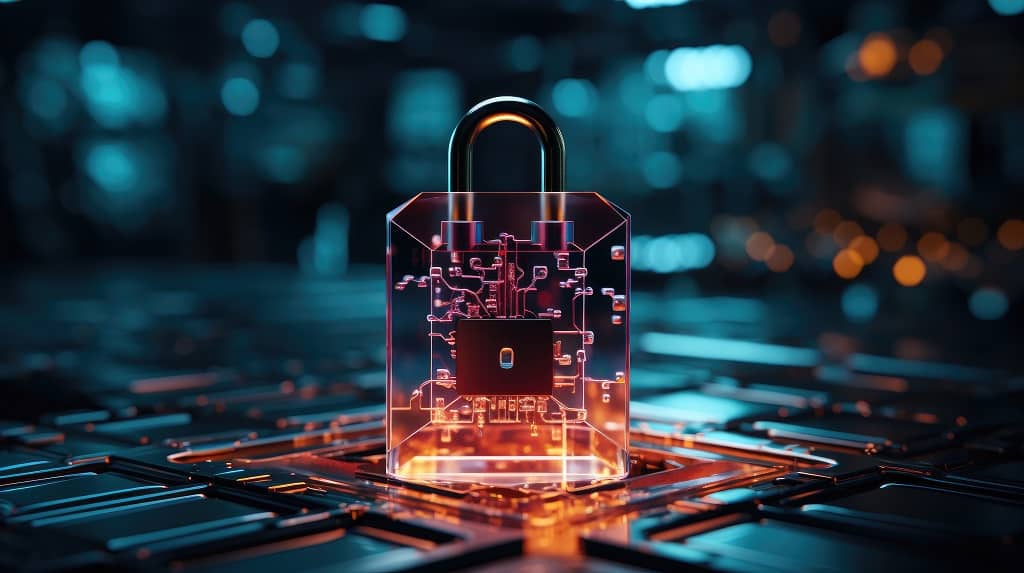Amid the growing trend of businesses shifting their operations to the digital realm, it’s essential for business owners to remain mindful of the online landscape and the potential risks it harbors. Neglecting or being unprepared for these risks, as in any situation, can lead to significant consequences. Ransomware, among the array of digital threats, stands out as one of the most menacing.
Keep reading as we demystify ransomware for business owners and provide actionable insights into how to protect your organization from falling victim to these malicious attacks.
The Impact of Ransomware on Businesses
Imagine walking into your office one morning only to find your computers locked with a menacing message flashing on the screen. Your business data, financial records, and customer information are encrypted, rendering them inaccessible—this is the grim reality of a ransomware attack.
The repercussions of ransomware can ripple across various aspects of businesses.
Let’s look a little more closely at each:
The Financial Toll
Cybercriminals can ask for any ransom they want—or even demand you pay multiple times—which can cost a small fortune. But we don’t recommend paying, as it doesn’t guarantee your data will be safely returned to you and actually encourages more attacks by the same cybercriminals, as they know you’re willing to pay and can.
Other financial burdens exist with ransomware attacks, such as the cost of cybersecurity to try and recover your data after a ransomware attack. Add to that the possible legal fees, the lost revenue due to downtime, and the long-term financial strain that comes with this type of cyberattack.
Data Loss and Recovery
Data is important, even more so when it comes to a business. Because of this, losing it can be a nightmare, and this is why ransomware attacks often work so well. If you don’t have some sort of solid backup and disaster recovery plan in place when it happens as well, recovering your data can become an impossible task.
However, you may be thinking, “Surely, I can just pay the ransom and get the data back.” Unfortunately, it’s not that simple; often, the cybercriminals will provide a decryption key that doesn’t even work or ask for more money for your data even once you’ve already paid, making recovery unlikely.
Operational Disruption
One of the worst parts about ransomware attacks is how they disrupt business operations. Your employees can’t access their work files, and your systems grind to a halt. This downtime can last for days or even weeks, causing significant productivity losses. In some cases, businesses are forced to shut down temporarily, leading to a loss of customer trust and revenue.
Reputation Damage
Ransomware attacks not only steal your data but can also tarnish your reputation. Customers and partners may lose faith in your ability to protect their sensitive information. Rebuilding trust after a ransomware attack can be a herculean task, with many businesses struggling to recover.
Steps to Protect Your Business
At this point, we understand if you might feel very ‘doom and gloom’ about the possibility of your business falling prey to a ransomware attack.
The good news is that with the right cybersecurity measures in place, you can significantly reduce the risk of falling victim to ransomware. In fact, there are even things you can do right now to protect your business from ransomware attacks. As with many things in the cyber world, a preemptive approach is the best way to go about keeping your business—and its data—safe.
Let’s look at some actionable steps your business can employ:
Employee Training
Your employees are the first line of defense against ransomware. Train them to recognize phishing emails and suspicious attachments. Cybercriminals often use these tactics to infiltrate your network. Instruct your team never to click on unknown links or download files from unverified sources.
Regular Software Updates
Keeping your software up to date is vital. Cybercriminals often exploit vulnerabilities in outdated software. Ensure your operating systems and applications are regularly patched to close any potential security holes.
Strong Antivirus and Anti-Malware Software
Invest in reputable antivirus and anti-malware solutions. These tools can detect and neutralize ransomware threats before they wreak havoc on your systems.
Data Backup and Recovery
Regularly backup your data and store it in a secure, offsite location. Automated backup solutions can ensure that your data is safe and easily recoverable. This eliminates the need to pay a ransom to retrieve your files.
Network Security
Implement a robust firewall and intrusion detection system to monitor your network for any unusual activity. Access controls and strong passwords are also essential to restrict unauthorized access to your systems.
Email Security
Enhance your email security with advanced filtering and authentication measures to reduce the risk of phishing attacks. Email is a common vector for ransomware delivery.
Secure Remote Desktop Protocol (RDP)
If you use RDP, ensure it’s properly secured. Disable unnecessary features and implement strong authentication methods. Cybercriminals often exploit weak RDP configurations.
Incident Response Plan
Prepare for the worst-case scenario with a well-defined incident response plan. Your team should know exactly what steps to take if a ransomware attack occurs. This includes isolating affected systems, reporting incidents, and initiating data recovery procedures.
Regular Testing
Like with many methods cybercriminals use, ransomware attacks are constantly evolving to get past implemented security measures. Because of this, having one security measure in place and leaving it be, thinking it’ll handle anything thrown at it, can be something that comes back to bite you.
Instead, regularly test your security measures and incident response plan. Simulated ransomware attacks can help your team practice their response, identify any weaknesses in your defenses, and keep them updated so that any new known ransomware threats can be handled much more easily.
Cyber Insurance
Consider investing in cyber insurance. While it won’t prevent a ransomware attack, it can provide financial protection if one occurs.
Ready to get the cybersecurity your business needs? CMIT Solutions East Brunswick is here to help. Whether you don’t have an IT department or your smaller IT group is looking for assistance, we have you covered. Contact us today to get started!





